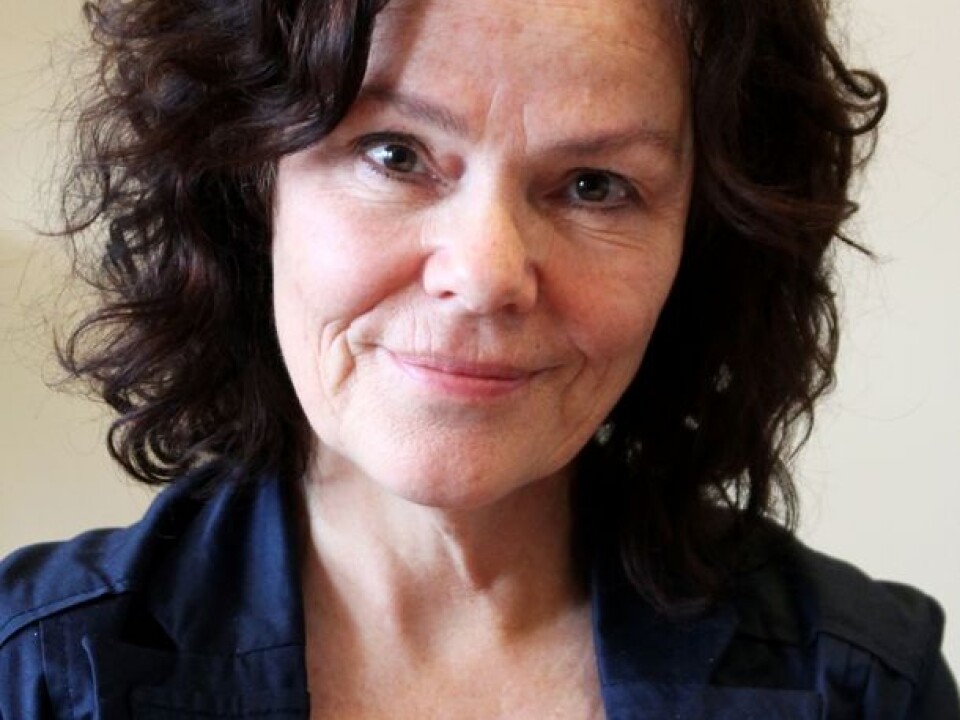An article from KILDEN Information and News About Gender Research in Norway

Weekend mums meet prejudice
Embarrassing silence, bad looks and open confrontation – these are some of the reactions faced by Norwegian women who do not live with their children after a break-up.
Denne artikkelen er over ti år gammel og kan inneholde utdatert informasjon.
“What was wrong with me? There had to be something wrong. Most people think that if the father has the children full-time, then you’ve lost your case in court. Then you must either be a drug addict, an alcoholic or crazy.”
This is how Silje describes the prejudice she faces, and she is not alone in feeling stigmatized. When Camilla told the kindergarten teacher about the visiting arrangement, the woman burst into tears. Others became very upset.
“They don’t understand. They can’t understand. ‘Yes, but a mother! Children need their mother!’ They think that mum is more important than dad. I almost have to comfort people. My sister hears bad things said about me. She takes a lot of crap on my behalf, and she finds it very exasperating.”
Mothers with visiting rights
Silje and Camilla are two of the seven women interviewed by sociologist Grete Larsen about life as non-resident mothers in Norway. After breaking up with their partners, the women are together with their children one day a week and every other weekend.

“This pattern of contact is so closely associated with men that many people don’t consider that there are women in the same situation,” says Larsen. Everyone she interviewed had willlingly signed the agreement in cooperation with the children’s father, and neither lawsuits nor personal problems had any impact on where the children would live.
Larsen and Professor Anne Lise Ellingsæter has given us new insight into the daily life of non-resident mothers.
Don’t live up to expectations
“Women who have their children part-time don't live up to the expectations or requirements placed on mothers. Little is known about why some women end up in this situation, which is why the myths flourish. They are often seen as bad mothers who have let down their children,” says Larsen.
Several of the mothers came to realise that the father’s home and network were the best alternative for the children after the break-up. Moving, studies and demanding jobs were other reasons mentioned by the women. They also wanted to avoid conflict with the children’s father. Beate explained it this way:

“It was my concern for the level of conflict that in the end made me give up the fight. So that there wouldn’t be an ongoing conflict and so that we wouldn’t drag the case to court and things like that. [...] If I had won, the conflict would have just continued!”
“This is the situation that also many men find themselves. Some probably become weekend dads because they choose to give in before the conflict escalates and becomes completely awful,” says Ellingsæter.
“In the child’s best interest”
“The most important consideration was our child. So he could grow up in a place he had always lived, in his own environment”, says Turid.
Like the other mothers, she is keen to explain her choice as being “in the child’s best interest”. This is a guiding principle established both in legislation and in norms related to divorce settlements in Norway.
”It was important for them to give a convincing explanation for why they didn’t live with their children. They emphasized that the arrangement had been made because they had their children’s best interest at heart, not their own. This is the most widely accepted explanation. And only then did they get any sympathy for the situation, at least from the younger generation. But the mothers felt at times it was both tiresome and unfair that they had to constantly explain themselves since, after all, others didn’t have to,” explains Larsen.
To cope with all the prejudice, some of the women chose silence as a strategy. They avoided talking about the visiting agreement to escape the remarks.
An investment approach
Ellingsæter views prejudice against non-resident mothers in connection with the demands placed on motherhood, which she believes are higher than ever before. She points to mum blogs and the public debate as two examples.
“There is no longer talk of the ‘good mother’, but the norms associated with motherhood are hidden in an investment approach which says that you must invest money, time, yes, everything possible, in your children. For instance, you mustn’t drink or smoke during pregnancy, you should prepare baby food from scratch, and you should ensure that the children have the correct leisure activities. It’s no longer enough that the children are clean and have decent clothes to wear. You also need to love them in the right way,” says Ellingsæter.
No “amusement park mum”
The non-resident mothers are also affected by the many expectations of motherhood. They do their best to normalize their family situation. June puts it this way:
“We do things about the same as we did before. Ordinary things in daily life. I decided rather early on that it isn’t going to be just games and fun when they are here.”
“The non-resident mothers defined themselves in sharp contrast to the ‘amusement park dad’. They didn’t want a situation where they had to think of things to do all the time or to ‘buy’ their children with fun activities. Instead they worked hard to incorporate daily life into their time with the children. They were very concerned about the word 'ordinary'. They described themselves as ordinary mothers with ordinary families and ordinary rules, even though the framework around their lives was a little bit different,” explains Larsen.
Best to live with dad?
In a study from the 1990s on non-resident parents in Denmark, sociologist Mogens Nygaard Christoffersen concluded that it is better for children to live with their fathers after a divorce. His reason was in part that non-resident mothers do a better job of following up than fathers in the same situation, so that the children get more overall contact with both parents. This corresponds with the result of one previous Norwegian survey and with the mothers’ statements in Larsen’s qualitative study.
“The non-resident mothers made an intensive effort, especially when it came to investing time. They have a lot of contact with the children in addition to the time agreed to. Except for one, all of the mothers in the study talked with their children on the phone every day. They didn’t stop being a mother when the children went home to their fathers on Sunday evening, but instead maintained an active, close role. They thought of themselves as full-time mothers even though they had their children only part-time,” says Larsen.
Gender-equal visiting arrangement
Common to all the women in the study was that they had a fundamentally positive view of the caregiving abilities of the men, who had been engaged, committed fathers prior to the break-up. In addition, the women wanted to ensure that gender would not be the deciding factor when drawing up the best visiting arrangement. One of them states:
“It was important for me from the start that I don't accept the premise that most people do, which is that women are better than men at taking care of the children. It could be that if you count, you’ll find that more women do the best job of looking after the children, but you can’t categorize people like that! [...] I wish that people would view fathers as better caregivers.”
Both Larsen and Ellingsæter point out that an engaged father and a gender-neutral view of a man’s caregiving abilities are essential for a change in the direction of more gender-equal parenting after a break-up. But what does a gender-equal approach to a visiting arrangement actually look like? Camilla says:
“It’s my private joke! I say this is what true gender equality looks like. When you get divorced, it could actually happen that the children end up living with their father instead of their mother.”
------------------------------
Read the Norwegian version of this article at forskning.no
Translated by: Connie Stultz

































